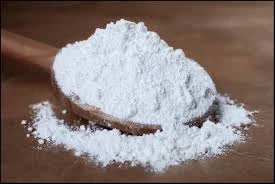
Antacid Formulation Combining Magnesium Hydroxide and Aluminum Hydroxide for Digestive Relief
Antacid with Magnesium Hydroxide and Aluminum Hydroxide A Comprehensive Overview
Antacids are widely used medications designed to neutralize stomach acid, providing relief from symptoms such as heartburn, acid indigestion, and upset stomach. Among the various formulations available, those containing magnesium hydroxide and aluminum hydroxide are particularly popular due to their effective approach to managing gastric acidity while minimizing side effects.
Composition and Mechanism of Action
Magnesium hydroxide (Mg(OH)2) and aluminum hydroxide (Al(OH)3) work synergistically to provide antacid effects. Magnesium hydroxide is a rapid-acting antacid that efficiently neutralizes gastric acid, providing quick relief from discomfort. On the other hand, aluminum hydroxide acts more slowly but offers a longer-lasting effect. Together, they balance each other's actions—magnesium hydroxide's laxative properties are countered by aluminum hydroxide's constipating effects, leading to a more stable gastrointestinal response.
When ingested, these compounds react with hydrochloric acid (HCl) in the stomach, resulting in the formation of water and various salts. This neutralization process increases the pH level within the stomach, alleviating the burning sensations associated with excess acid. This chemical reaction turns a painful situation into a manageable one, highlighting the essential role of these antacids in digestive health.
Therapeutic Uses
Antacids containing magnesium and aluminum hydroxide are primarily used for symptomatic relief of gastroesophageal reflux disease (GERD), peptic ulcers, and gastritis. GERD, a chronic condition where stomach acid frequently flows back into the esophagus, can cause significant discomfort. Antacids provide rapid, though temporary, alleviation of the symptoms associated with this condition.
Peptic ulcers, which can lead to serious complications if left untreated, may also benefit from the use of these antacids. The neutralization of stomach acid creates a less acidic environment, allowing the ulcerated tissue to heal more effectively. Additionally, individuals suffering from gastritis due to excessive acid production often find relief through the use of magnesium and aluminum hydroxide formulations.
antacid with magnesium hydroxide and aluminum hydroxide

Benefits and Side Effects
One of the primary benefits of using antacids that contain magnesium hydroxide and aluminum hydroxide is their dual action in the digestive system. They offer rapid relief while reducing the potential for gastrointestinal disturbances that may be prevalent with single-component antacids.
However, these antacids are not without their side effects. Some individuals may experience constipation as a result of aluminum hydroxide, while magnesium hydroxide may cause diarrhea. This is why many formulations are combined, as the balance helps mitigate these side effects. Furthermore, excessive use of antacids can lead to an unwanted increase in magnesium levels, particularly in individuals with compromised kidney function, highlighting the need for cautious use and monitoring.
Considerations for Use
It is crucial to consider certain factors before using antacids containing magnesium and aluminum hydroxide. First and foremost, individuals should consult with healthcare professionals, especially if they are currently taking other medications. Antacids can interfere with the absorption of certain medications, thereby reducing their effectiveness. Additionally, those with pre-existing conditions such as kidney disease or bowel obstruction should be particularly cautious.
As with any medication, adherence to recommended dosages is essential. Overuse can lead to a condition known as milk-alkali syndrome, characterized by metabolic alkalosis, elevated calcium levels, and renal impairment. Moreover, antacids should be used as a temporary solution; underlying conditions causing excessive acid production should be evaluated and treated through more comprehensive medical approaches.
Conclusion
Antacids containing magnesium hydroxide and aluminum hydroxide play an essential role in managing gastric acidity and alleviating discomfort associated with conditions such as GERD, peptic ulcers, and gastritis. Their rapid and dual-action formulation provides relief while balancing potential side effects. Nevertheless, responsible use is key, and individuals experiencing chronic symptoms should seek medical advice for a thorough evaluation and treatment plan. With their effective mechanism of action and significant therapeutic applications, magnesium and aluminum-based antacids continue to be vital tools in digestive health management.
-
Understanding Synthetic Rubber OptionsNewsApr.27,2025
-
Trichloroisocyanuric Acid: Essential for Clean and Safe WaterNewsApr.27,2025
-
Sodium Dichloroisocyanurate: Key to Safe Water TreatmentNewsApr.27,2025
-
Sodium Acid Pyrophosphate: Essential in Modern Food ProcessingNewsApr.27,2025
-
Essential Water Treatment ChemicalsNewsApr.27,2025
-
Denatured Alcohol and Its Industrial UsesNewsApr.27,2025
-
The Versatile Uses of Sodium BicarbonateNewsApr.24,2025
Hebei Tenger Chemical Technology Co., Ltd. focuses on the chemical industry and is committed to the export service of chemical raw materials.
-

view more DiethanolisopropanolamineIn the ever-growing field of chemical solutions, diethanolisopropanolamine (DEIPA) stands out as a versatile and important compound. Due to its unique chemical structure and properties, DEIPA is of interest to various industries including construction, personal care, and agriculture. -

view more TriisopropanolamineTriisopropanolamine (TIPA) alkanol amine substance, is a kind of alcohol amine compound with amino and alcohol hydroxyl, and because of its molecules contains both amino and hydroxyl. -

view more Tetramethyl Thiuram DisulfideTetramethyl thiuram disulfide, also known as TMTD, is a white to light-yellow powder with a distinct sulfur-like odor. It is soluble in organic solvents such as benzene, acetone, and ethyl acetate, making it highly versatile for use in different formulations. TMTD is known for its excellent vulcanization acceleration properties, which makes it a key ingredient in the production of rubber products. Additionally, it acts as an effective fungicide and bactericide, making it valuable in agricultural applications. Its high purity and stability ensure consistent performance, making it a preferred choice for manufacturers across various industries.











